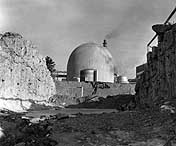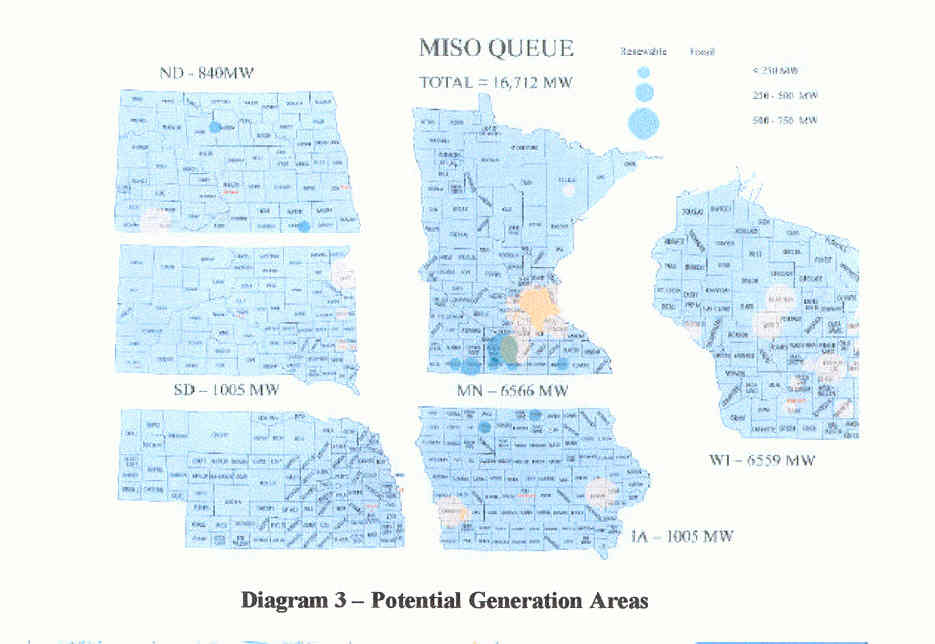Electric – 70s deja voodoo all over again
February 17th, 2007

As I work on this energy mess we’re in, I’m struck by the force of an industry push to construct despite no need, to build billions of dollars of generation and transmission that we don’t need to facilitate their unregulated wholesale market transactions, and of course that transmission will also facilitate all those new coal plants:
As if that wasn’t enough, there are all these folks promoting coal gasification when they haven’t a clue what it’s about, saying it has superior environmental performance, and pretending as if carbon capture and storage is feasible! What are they thinking?
And then I remember this meeting at Commerce, October 2000, I believe, back in the days when the enviros were ready and willing to acquiesce to “restructuring” or deregulation, which was a position utterly without gonads. This was in the … sigh… Ventura days, and although the “Department of Public Service” had been disappeared and Commerce took over, it was a time when people could easily meet with staff, a time when Commissioner Bernstein held the monthly breakfasts, when service lists were honored because the public mattered, where energy planning was a happenin’ thang and where the state’s preferences for distributed and renewable generation meant something. Anyway, recently I was jolted back by Charles Komanoff’s review and characterization of the overbuilding of the 70s, and remembered that back in October 2000, I’d copied parts of Kahn’s “The Economics of Regulation” to show the parallels, where we were going, and then Komanoff reminded me that we’re there, doing the same damn stupid human tricks all over again.

Kahn noted that utility regulation that levies current ratepayers provides, in the form of” increased cash flow to finance capacity additions,” incentive to build more generation than what’s needed. He also raised an interesting thought — that the way it’s foisted on current ratepayers, there’s inherent generational inequity. Hmmmm… Anyway, as the 70s “progressed” and so many nuclear plants were built, costs escalated astronomically, some were never completed, and those that were often left those utilities with grossly excessive and unneeded capacity. Ratepayers got hit hard. From there, go to my previously blogged description by Komanoff, in Power Plant Cost Escalation, of construction of nuclear plants that required extensive design and engineering for each plant, incorporating lessons learned and addressing problems that became apparent during design and construction, which lead to the high costs, both in construction and through abandonment of projects that weren’t economically and/or operationally feasible to build.
Coal gasification (IGCC) is our 70s nuclear. Too many yahoos are advocating construction of coal gasification plants without knowledge of the state of IGCC technology, the serious technological problems (such as gasifier problems so severe that they don’t solve it, they instead design in a “spare gasifier.” Oh, great…), and the massive cost increases — in the case of Mesaba, increasing from $500-600/kW when first proposed to legislature in January, 2002, to $3,593/kW, or $2,155,680,783 in May, 2006, and bound to go up further.
The rate structure would allow immediate inclusion in the rates, both for these IGCC plants and for the billions of dollars in unneeded transmission infrastructure of CapX2020 (Check the “Transmission cost adjustment” that lets them get it more quickly).
OK, once more with feeling. In Minnesota, our biggest utility doesn’t “need” new baseload power until 2015, and at that time, it’s only 375MW, which they’re fulfilling with wind and hydro. The Dept. of Commerce, in the Big Stone II plant in SD’s transmission docket here in MN, says that the many utilities that banded together to build BSII did not prove up need. There was no need for Mesaba so it was legislatively exempted from Certificate of Need. And Renewable Electricity Standard now before the MN legislature is a mandate, again, because there is no need (if we needed it, we wouldn’t require mandates). Yahoos claim “we’re going to freeze in the dark” NEED, growth of 2-2.49% annually but the Long Term Reliability Reports of the industry’s North American ElectriclReliability Council say otherwise — look at the lower rates of increase for demand and energy, high reserve margins, and high levels of new construction. The Wind Integration Study demonstrates that we can integrate 5,000-6,000MW into the Minnesota grid with only nominal transmission additions — we “need” 375MW and can integrate in thousands of MW! It’s really that simple!
And as we know, CapX2020 (aka Xcel, et al) is driving the construction and of course they don’t look at their own map on p. 7, nor, it seems, is anyone else:
Why are legislators and policy wonks who have access to all this information buying this crap? Why would anyone think we need coal, much less that we can’t do without it? Why would anyone think we need over a billion dollars of transmission? It’s against evidence and we’ve been there, done that and we don’t need to do it again. Is it that we’re experiencing the limitations of our educational system and its inability to produce critical thinkers? Are we experiencing the impacts of mercury? Are we experiencing the impacts of the power of $$$$$$$?  Why do you thihnk they call them “power companies?”


February 17th, 2007 at 11:20 pm
Carol,
You may know an awful lot about whether or not the Mesaba project is needed or not, but you have it all wrong about the status of gasification and IGCC technology.
As I’ve already shown you, there are several IGCC plants in Europe that are achieving high enough availabiity levels (in the low-to-mid 90% range) to be used as a baseload power generting plant in the US.
None of these plants use a spare gasifier.
In fact, one of the several advantages of IGCC technology is that the gasifier can undergo it’s annual maintenance (if that is, in fact, necessary depending on gasifier design)during off-peak periods, and while the gasifier is being worked on , the combined cycle is still available, if needed, to operate on natural gas.
Also, if you’d check on the details, you’ll find that most of the unplanned outage time at the 15 or so operating IGCC plants worldwide has been due more to problems with the gas turbines and other mundane equipment, not the gasification system.
The push to use advanced design gas turbines, perhaps prematurely, was to blame for that. Where better established gas turbine designs were used, such as in those European plants that I mentioned, the availability story is quite different.
Gasification of coal or refinery residuals, such as asphalt or petroleum coke, has been used as an industrial process for the supply of syngas and hydrogen for decades. As you know, such industrial processes are required to have extremely high reliability. Use of a spare gasifier is an option that is elected in such cases as an economic choice where it pays to have 100% reliability – as in the case of hyrogen supply in refineries.
That level of reliability and availability not required in power plants, and the cost of achieving it is not justified.
None of the IGCC power generation projects planned at this time are planning to use a spare gasifier. With the availability of backup natural gas at the plant, extremely high availability levels are readily achieved.
The fact that a lot of well-meaning people (“Yahoos”?) are seeking to promote a cleaner technology for what seems to be the inevitable increase in coal-based power generation is not to be faulted.
Whether or not IGCC will be that much more costly (or even cheaper) than advanced PC plants when CO2 capture and sequestration is mandated is yet to be determined – but all evidence points to a reversal in direction of the so-called “IGCC cost gap” that you talk about.
IGCC will be at least competitive with PC plants when CO2 capture has to be desined into the plant equipment. There is no debate on that.
Whether or not the added coal-based power generation is needed is another question, and that is what you needed to focus on. Clearly your current clients are upset about where the Mesaba plant is going to be located. Since they pay your bills, and you need to be working in their behalf in opposition of the project, the reason behind your position is understandable.
I wonder if you would be so vocal in your opposition, however, if the project was to be located at its original ‘brownfield location’ – and your clients never called on you to fight their battle over whatever water issues they seem to have with the project.
Harry Jaeger
Gasification Editor
Gas Turbine World News
February 21st, 2007 at 9:24 pm
Well, Harry:
We have considerable experience with an IGCC in Delaware burning pet coke. (Delaware City Refinery, now owned by Valero.)
This thing has never had reasonable availability (17 to 30 percent…) due to problems with the Texaco gasifiers and gas cleanup train.
I don’t question that reliable and cost-effective IGCC plants can be developed. But are we there not? Clearly there IS a technology risk. given the many other problems with coal, is this a risk worth taking?
Many people are doubtful.
Alan Muller
Green Delaware